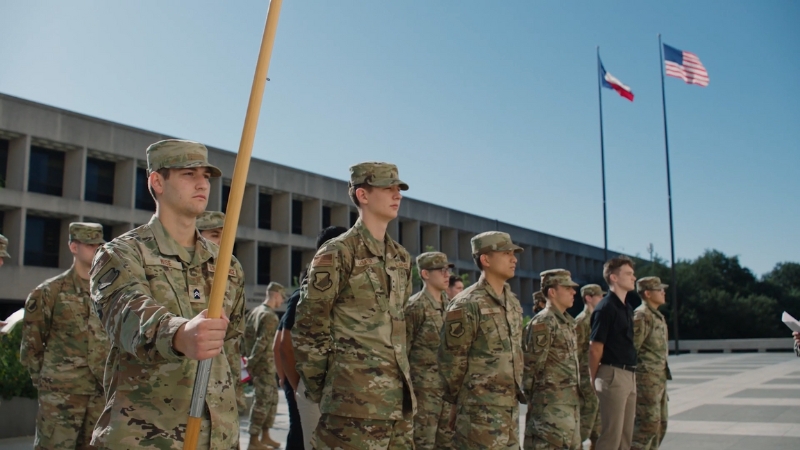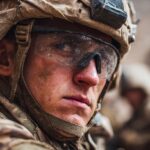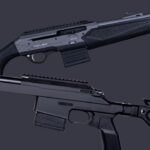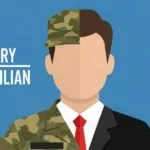A comprehensive resource for students considering military service and education, the guide highlights how the Reserve Officers’ Training Corps (ROTC) operates in 2025. It lays out the fundamental structure, expectations, and advantages of enrolling in an ROTC program at a U.S. college or university.
ROTC prepares college students for leadership positions as commissioned officers in the United States Armed Forces. Offered through participating colleges, it blends academic education with military training.
In 2025, adjustments reflect technological updates in military education, more streamlined application processes, and expanded scholarship options. With a greater focus on cyber readiness and advanced simulation training, today’s ROTC program balances tradition with innovation.
ROTC Program Overview
Congress created ROTC through the National Defense Act of 1916. Designed to ensure a consistent pipeline of well-educated officers, ROTC programs operate today on more than 1,700 college campuses across the United States.
Unlike Junior ROTC (JROTC), which focuses on citizenship and leadership at the high school level, college-level ROTC prepares students for active or reserve officer roles.
Participation brings valuable benefits. Cadets develop leadership skills through training and field experiences that mirror active-duty responsibilities. Technical and tactical proficiency becomes part of everyday learning.
Scholarship opportunities cover tuition, books, and offer monthly stipends. Upon graduation, cadets are commissioned into their respective branches, ready to lead troops or manage specialized missions.
ROTC Branch Programs
ROTC programs are tailored by military branch, each offering distinct training experiences, academic tracks, and service commitments.
While sharing a common goal of officer commissioning, the Army, Navy (including the Marine Corps option), Air Force, and Space Force programs each prepare cadets for different missions and operational environments.
Several important components, such as campus availability, academic focus, summer training, and career outcomes, distinguish one program from another.
Key features for each branch program include:
Army ROTC
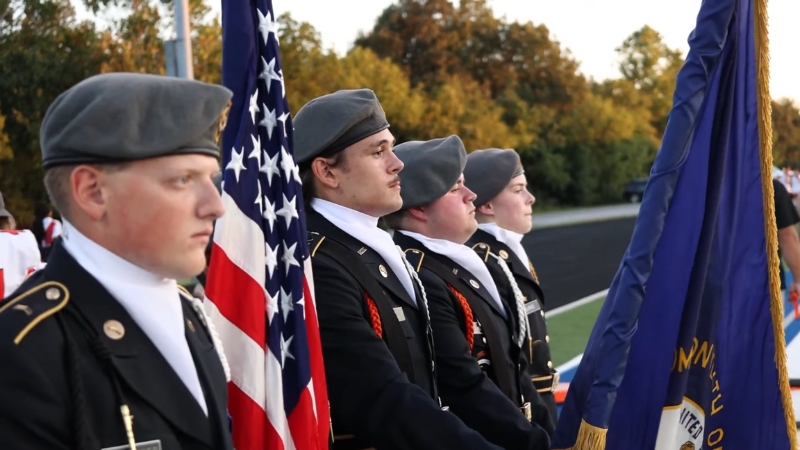
Army ROTC operates on more than 1,000 campuses, providing widespread access to students interested in leadership and tactical operations. The program develops skills essential for both combat and support roles in the U.S. Army.
Key curriculum areas include:
- Military science and ethics
- Small unit tactics and decision-making
- Land navigation and terrain analysis
- Communication and operational planning
Cadets participate in progressively challenging training. Basic Camp, generally for those entering without prior ROTC experience, introduces Army fundamentals.
Advanced Camp, hosted at Fort Knox, tests rising seniors on their ability to lead under stressful conditions through simulated missions.
Additional highlights:
- Physical fitness and character development are integrated throughout all years
- Leadership evaluation determines future branch selection
- Scholarship cadets incur service obligations ranging from 4 to 8 years, often split between active duty and reserve components
Navy/Marine Corps ROTC
Navy ROTC operates at over 170 colleges, while Marine Option programs are available at 77 select institutions. Each path leads to a commission, either in the Navy or Marine Corps, with specialized preparation based on career trajectory.
Navy track focuses on:
- Surface and submarine warfare
- Aviation and nuclear propulsion
- Navigation, ship systems, and seamanship
- Maritime security operations
Marine Option focuses on:
- Amphibious assault strategy
- Small unit leadership
- Marine Corps history and traditions
- Physical readiness and warfighting mindset
Summer training plays a central role. Navy midshipmen participate in “summer cruises” aboard naval vessels, in aviation squadrons, or with submarines.
Marine candidates engage in specialized field training, including the demanding Officer Candidate School (OCS) during the summer prior to commissioning.
Notable features:
- Emphasis on technical majors, especially engineering and navigation sciences
- Courses include naval science, calculus, physics, and ethics
- Training develops both operational competence and adaptability under high-pressure conditions
Air Force/Space Force ROTC
View this post on Instagram
Available at approximately 1,100 institutions, Air Force ROTC serves both traditional Air Force and emerging Space Force roles. Instruction blends technical education with mission-oriented leadership.
Key academic and training elements include:
- Aerospace studies and global security
- Cyber operations and systems integration
- Ethics, strategy, and leadership decision-making
- Team-based projects and real-time problem solving
Cadet development occurs in two structured phases:
- General Military Course (Years 1–2): Introductory lessons in aerospace operations and military customs
- Professional Officer Course (Years 3–4): Advanced leadership, staff coordination, and field preparation
Cadets attend summer Professional Development Training (PDT), where they gain hands-on experience at active-duty bases, shadow officers, and engage in activities tailored to their intended Air Force Specialty Code (AFSC) or Space Force assignment.
Additional program characteristics:
- Majors in STEM and technical disciplines are highly encouraged
- Performance in the Air Force Officer Qualifying Test (AFOQT) influences career assignment
Commissioned officers typically serve a four-year minimum active-duty term, with longer commitments for rated positions such as pilot or air battle manager
Daily and Weekly Cadet Requirements
ROTC cadets balance their military duties with academic obligations. Each semester, cadets attend military-focused academic classes that carry 1 to 3 credits.
Leadership labs are held weekly and usually require cadets to be in uniform. Activities include drills, briefings, and team-building exercises.
Physical Training (PT) occurs three to five mornings per week. Cadets run, complete calisthenics, and improve endurance. The standard includes pushups, situps, and timed runs, often covering two miles.
Field Training Exercises (FTXs) take place once or twice each semester, involving overnight simulations of real combat or mission scenarios.
Cadets wear uniforms on designated days, typically one or two times per week, to maintain a professional presence on campus and reinforce military identity.
Scholarship and Financial Aid Details
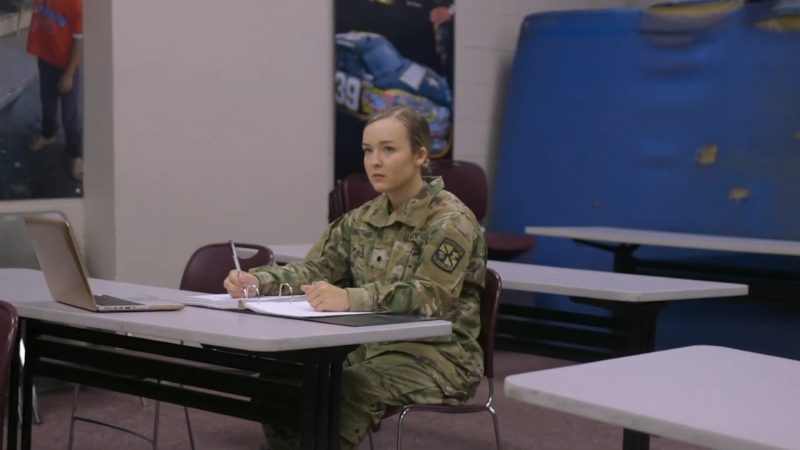
ROTC programs offer a wide range of scholarship opportunities designed to attract top-performing students with leadership potential and a commitment to military service.
Financial support not only helps students cover tuition and other college costs but also comes with benefits that support academic success and military development.
Students often seek additional academic help to manage demanding coursework alongside ROTC obligations.
Services like EssayPro offer writing assistance for assignments and can help cadets balance time between physical training, field exercises, and academics. For more insights on reliability and service quality, check out recent EssayPro reviews.
Several key criteria must be met before applying, and the types of scholarships vary in duration and coverage.
Eligibility Requirements (Army ROTC)
To qualify for an Army ROTC scholarship, applicants must meet strict academic, physical, and legal standards.
The goal is to ensure cadets possess the discipline and capability to succeed in both college and military environments. Requirements vary slightly by branch, but the Army serves as a standard model.
Eligibility highlights include:
- U.S. citizenship
- Age of at least 17 years
- Minimum GPA of 2.5 (Air Force ROTC generally expects a GPA of 3.0)
- Passing physical fitness standards (pushups, situps, and a timed run)
- Acceptable ACT or SAT scores
- Willingness to commit to enlistment and accept a commission as an officer upon graduation
Applicants undergo a thorough selection process, and those who receive scholarships must sign a contractual agreement outlining service obligations. Failing to meet requirements after accepting a scholarship may lead to dismissal from the program and repayment obligations.
Scholarship Types
Did you know that there are scholarships available for military personnel and their families?
Find more educational benefits for those who complete military service: https://t.co/blFIZDCx8a pic.twitter.com/yDj1VMBr1z
— Federal Student Aid (@FAFSA) May 26, 2023
Scholarships are awarded based on merit, intended major, and leadership potential. Programs offer multiple options to suit different academic timelines and financial needs.
Common ROTC scholarship types:
- Four-year scholarships: Designed for high school seniors entering college
- Three-year scholarships: Available to freshmen or sophomores already enrolled in ROTC
- Two-year scholarships: Typically offered to students transferring into ROTC or those completing basic training
What these scholarships may cover:
- Full or partial tuition
- Textbook stipends
- Monthly living allowances (based on cadet year)
Additional program priorities include:
- Preference for students majoring in STEM fields
- Emphasis on foreign language proficiency for roles in intelligence, cyber, and global operations
- Strong academic and fitness performance metrics
- Demonstrated leadership ability through extracurricular activities or prior service
Navy and Air Force programs often place higher value on technical majors due to the nature of naval warfare, aviation, and aerospace missions.
Students planning careers in engineering, cyber defense, or global communications may find greater scholarship availability through these branches.
Academic Requirements & Progress Standards
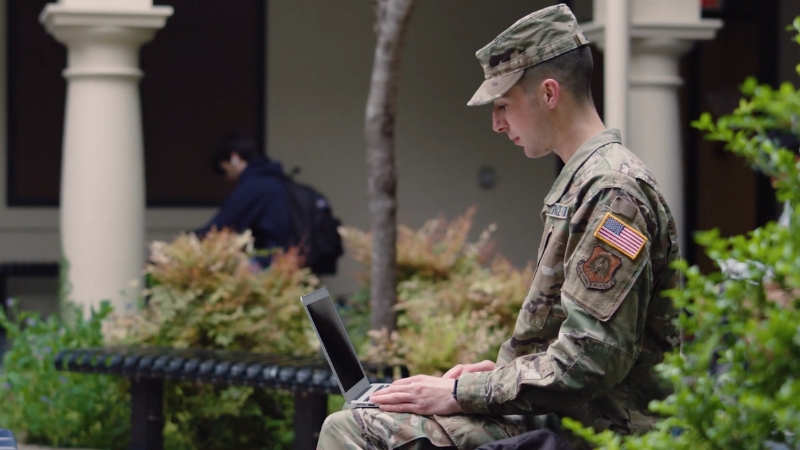
Cadets must meet academic and conduct standards to stay in ROTC. GPA requirements typically sit at 2.5 or higher.
Failing below may result in probation or scholarship revocation. Cadets are also expected to show leadership and adhere to a structured code of conduct.
Each branch sets its course standards. Army cadets take military science electives and leadership labs. Navy and Marine cadets must complete calculus, physics, English, and naval science courses.
Air Force cadets pursue aerospace studies and take the Air Force Officer Qualifying Test (AFOQT) to assess aptitude for pilot and non-pilot roles.
Continued participation demands discipline, resilience, and academic diligence—qualities that mirror officer expectations in the service.
The Bottom Line
ROTC offers a structured path for students aiming to serve as commissioned officers while earning a college degree.
Through its various branches, Army, Navy, Marine Corps, Air Force, and Space Force, the program builds leadership, physical discipline, academic excellence, and technical expertise.
Cadets benefit from financial support, hands-on training, and a clear career trajectory in military service.

